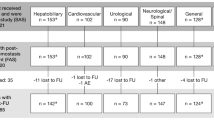Abstract
We describe the historical development of surgical instruments exemplified by hemostatic forceps, starting with antique and medieval forceps used for the arrest of bleeding to modern atraumatic hemostatic forceps used for vascular reconstruction. Their development proceeded mainly in three steps: (1) development of ligature forceps directly for hemostasis (Celsus, first century ad; Paré, 1582; L. Heister, 1743; (2) development of atraumatic forceps, which facilitate vascular reconstruction or anastomosis creation by temporarily clamping vessels (Höpfner, 1903; Stich, 1907; Jeger, 1913; (3) construction of tangential forceps, which, by partially clamping vessels with partial maintenance of blood flow, allow the reconstruction or anastomosis of large vessels in a side-to-side technique. The first tangential occlusion clamp was developed by Friedrich Trendelenburg (1844–1924) in 1908, when he established the operative treatment for embolism of the pulmonary artery. This clamp was later modified by A.W. Meyer (1927) and V.P. Satinsky (ca. 1950).
Similar content being viewed by others
Author information
Authors and Affiliations
Rights and permissions
About this article
Cite this article
Sachs, M., Auth, M. & Encke, A. Historical Development of Surgical Instruments Exemplified by Hemostatic Forceps. World J Surg 22, 499–504 (1998). https://doi.org/10.1007/s002689900424
Published:
Issue Date:
DOI: https://doi.org/10.1007/s002689900424




